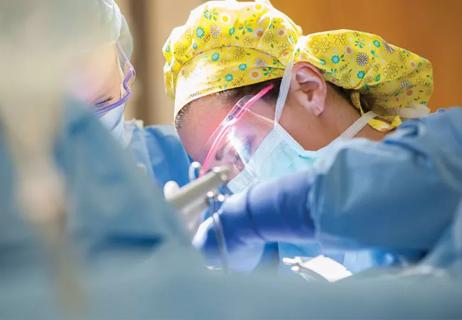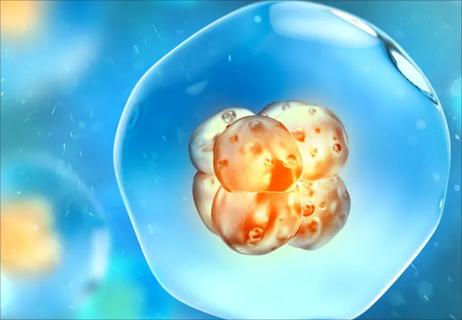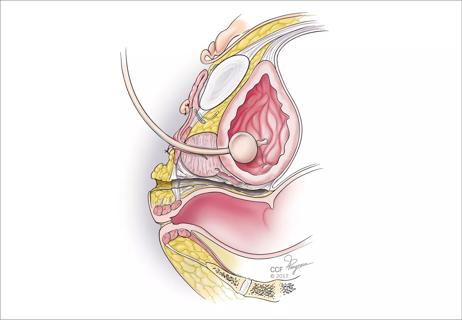Researchers hope to elucidate the disease’s pathogenesis

By Warren B. Nothnick, PhD, HCLD, and Tommaso Falcone, MD, FRCSC, FACOG
Cleveland Clinic is a non-profit academic medical center. Advertising on our site helps support our mission. We do not endorse non-Cleveland Clinic products or services. Policy
Endometriosis is a chronic, recurrent disease affecting as many as 1 in 10 of all women of reproductive age. Anti-hormonal treatment is often unacceptable, and surgery is often required to treat pelvic pain, dysmenorrhea and infertility.
The lack of adequate treatment stems largely from our poor understanding of factors that lead to the establishment and survival of endometrial stromal and glandular tissue in ectopic locations.
Debate persists over the mechanisms by which endometriosis develops, but reverse menstruation of viable endometrial tissue into the peritoneal cavity has the greatest support. One of this theory’s shortcomings is that almost all women of reproductive age exhibit some degree of retrograde menstruation, strongly suggesting that additional unidentified factors contribute to disease development and progression.
MicroRNAs (miRNAs) are small, noncoding regulatory RNAs that regulate gene expression after transcription. The expanding field of research on miRNA strongly supports its ability to regulate multiple factors involved in cellular adhesion, proliferation and survival — cellular events essential for endometriotic lesion establishment and survival.
MicroRNA-451 (miR-451) demonstrates misexpression in endometriotic lesion tissue and may be of considerable clinical interest. In experimental disease models, miR-451 regulates several transcripts whose proteins play pivotal roles in endometriotic lesion survival; macrophage migration inhibitory factor (MIF) may be among the most important.
To assess the expression and possible function of miR-451 in endometriosis, we conducted a retrospective study of 30 women undergoing surgical treatment for endometriosis.1 Our analysis of matched eutopic (N = 30) and endometriotic (N = 43) lesion tissues from the subjects included:

Both MIF mRNA and protein were significantly (P < 0.05) decreased in endometriotic lesions as compared to eutopic endometrium. This finding was associated with a significant (P < 0.05) increase in miR-451 expression. Transfection of hES cells with luciferase reporter constructs for MIF revealed that miR-451 specifically bound to the 3’UTR to regulate expression.
Further, forced expression of miR-451 induced significant (P<0.05) downregulation of both MIF mRNA and protein in epithelial cells, a finding associated with a significant (P<0.05) reduction in cell survival. MIF inhibition using a specific antagonist verified that reduction of MIF contributes to epithelial cell survival.
Lastly, elevated miR-451 and reduced MIF were associated with reduced cell proliferation; CCNE1 expression was reduced and PTEN was elevated in endometriotic lesion tissue.
Thus, we propose that in the pathogenesis of endometriosis, elevated miR-451 may function to regulate MIF expression in an attempt to curtail endometriotic lesion tissue/cell survival. In contrast, lesions that express low levels of miR-451 and elevated MIF may be more apt to survive.
The potential of a switch from low to elevated expression of miR-451 and the modulation of MIF expression as a mechanism to limit survival over the life span of endometriotic lesions is being explored. ✮
Dr. Nothnick is Professor of Molecular & Integrative Physiology and Scientific Advisor for Laboratory Animal Resources at the University of Kansas Medical Center.
Dr. Falcone is Professor and Chair of Cleveland Clinic’s Ob/Gyn & Women’s Health Institute and may be reached at 216.444.1758 or falcont@ccf.org.

Deprivation is linked to impaired glucose intolerance and racial disparities

Artesunate ointment is safe well and tolerated patients with vulvar intraepithelial neoplasia

A case-based discussion of efficacy, eligibility and use

Workshop curriculum was valued by some, while others would have preferred time for themselves

Study finds lower incidence of endometriosis than in cisgender patients

Large randomized study compares embryo growth kinetics and live birth rates between culture media

Surgeon experience is key to reducing adverse events

Introducing Laura Detti, MD, newly appointed Chair of the Department of Subspecialty Care for Women’s Health